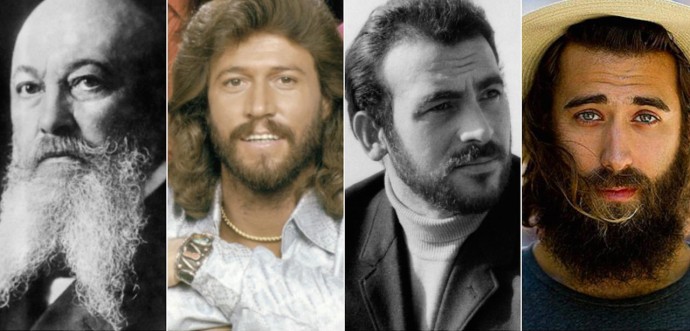The American facial hair has had a long and colourful history, one that is replete with contradictions. It hails from the time of the Revolution when white Americans considered barbering as the work of “inferiors”, referring to African-American men who were mostly slaves. This saw the black slaves rising up to the demand and working as entrepreneurs who offered their barbering services and eventually hit a gold mine with it. It concludes with the transformation of the beard as a symbol of authority and supremacy and eventually changing into a fashion statement. So let us travel through the history from the straight razor of African-American barber to the present day’s best electric shaver for men.

1800s the Shaved Look
American men of the early 1800s were typically clean shaven, going to barber shops for their shaving needs. Black men commonly dominated these barber shops, tending to their white American clientele, until they became rich and rose in prestige. Towards the Civil War, tension grew between the African-Americans and the white people eventually became less comfortable with the black barbers and them growing power. At the same time, white men started shaving their own faces, found that this was not an easy task and even risked exposing themselves to tetanus and other infections. This was when facial hair started gaining popularity and eventually coming into fashion.
Late 1800s – the Rise of Sideburns and the Chin Curtain
During the 1860’s Civil War period, the sideburns, named after General Ambrose E. Burnside who fought during the Civil War and the chin curtain beard came into fashion. However, these were not the only styles that became popular. Facial hair, in general, became the trend in the late 1800s.
The early 1900s the Handlebar Moustache’s Popularity
Towards the end of the century, facial hair became less and less popular. During the 1900s the clean-shaven look regained popularity, with Gillette Company coming into the picture. The company encouraged men to shave daily, with the bait that women loved a clean-shaven look. Men who sported any facial hair at all usually sported the handlebar moustache, which was extremely long and curved at the ends.
The 1930s the Toothbrush Moustache
Before World War II, Charlie Chaplin’s toothbrush moustache became prominent. It featured an inch of bushy facial hair just above the upper lip with both edges shaved. Probably because of Hitler, this moustache immediately lost popularity after the war.
From the 1930s-40s the Pencil Moustache
The period between the 1930s and 40s saw the rise in popularity of the pencil moustache, so-called because it looks like it was drawn with a pencil in its thinness. This moustache stretched above the upper lip in a thin line. Clark Gable sported this moustache. This decade is one of the important chapters in the history of men’s shaving. Colonel Jacob Schick invented the first electric razor. It played a vital role in the history of facial hair as almost every person in that decade wanted to have an electric razor for his own. After so many years of perfection we are now using the best electric razors in this 21st century.
The 1950s the Rise of the Goatee
The goatee became famous in the 1950s, with the emergence of counterculture movements into the mainstream culture. The beatniks were among those who popularized the goatee, a small beard on the chin which resembled the hair on a goat’s chin.
The 1970s the Horseshoe Moustache
This moustache style was popular among bikers and wrestlers during this period. Hulk Hogan is among the famous personalities to sport the Horseshoe moustache, so named because it is shaped like an inverted letter U.
The 1980s the Chevron Moustache
Thanks to Tom Selleck and the TV show during the 80s, Magnum P.I., the chevron moustache became popular again.
The 2010s and the “Lumbersexuals”
At present, no one type of beard or moustache is more popular than the other. Facial hair in general became a popular part of the fashionable men’s look. The beard trend of the late 2000s became known as the “lumbersexual.” Characterized by plaid shirts and beards, this look sported by mostly American men became a whole new fashion trend that it earned its own nickname.
Today, men who wear full beards are perceived to be sexier, healthier, and more attractive than their clean shaven counterparts. This is probably one of the reasons why beards and facial hair have come back into fashion, and why more and more men have set aside their shaving kits and allowed their beards to grow back.
So what is your style? Feel free to let us know in the comments section below.

